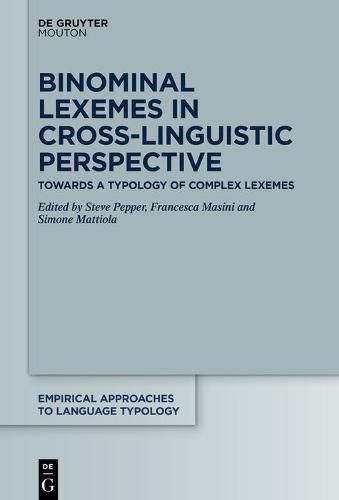Readings Newsletter
Become a Readings Member to make your shopping experience even easier.
Sign in or sign up for free!
You’re not far away from qualifying for FREE standard shipping within Australia
You’ve qualified for FREE standard shipping within Australia
The cart is loading…






This title is printed to order. This book may have been self-published. If so, we cannot guarantee the quality of the content. In the main most books will have gone through the editing process however some may not. We therefore suggest that you be aware of this before ordering this book. If in doubt check either the author or publisher’s details as we are unable to accept any returns unless they are faulty. Please contact us if you have any questions.
The typological, contrastive, and descriptive studies in this volume investigate the strategies employed by the world's languages to create complex denotations by combining two noun-like elements, together with the kinds of semantic relation they involve, and their acquisition by children.
The term 'binominal lexeme' is employed to cover both noun-noun compounds and a range of other naming strategies, including prepositional compounds, relational compounds, construct forms, genitival constructions, and more.
Overall, the volume suggests a new, cross-linguistic approach to the study of complex lexeme formation that cuts across the traditional boundaries between syntax, morphology, and lexicon.
$9.00 standard shipping within Australia
FREE standard shipping within Australia for orders over $100.00
Express & International shipping calculated at checkout
This title is printed to order. This book may have been self-published. If so, we cannot guarantee the quality of the content. In the main most books will have gone through the editing process however some may not. We therefore suggest that you be aware of this before ordering this book. If in doubt check either the author or publisher’s details as we are unable to accept any returns unless they are faulty. Please contact us if you have any questions.
The typological, contrastive, and descriptive studies in this volume investigate the strategies employed by the world's languages to create complex denotations by combining two noun-like elements, together with the kinds of semantic relation they involve, and their acquisition by children.
The term 'binominal lexeme' is employed to cover both noun-noun compounds and a range of other naming strategies, including prepositional compounds, relational compounds, construct forms, genitival constructions, and more.
Overall, the volume suggests a new, cross-linguistic approach to the study of complex lexeme formation that cuts across the traditional boundaries between syntax, morphology, and lexicon.